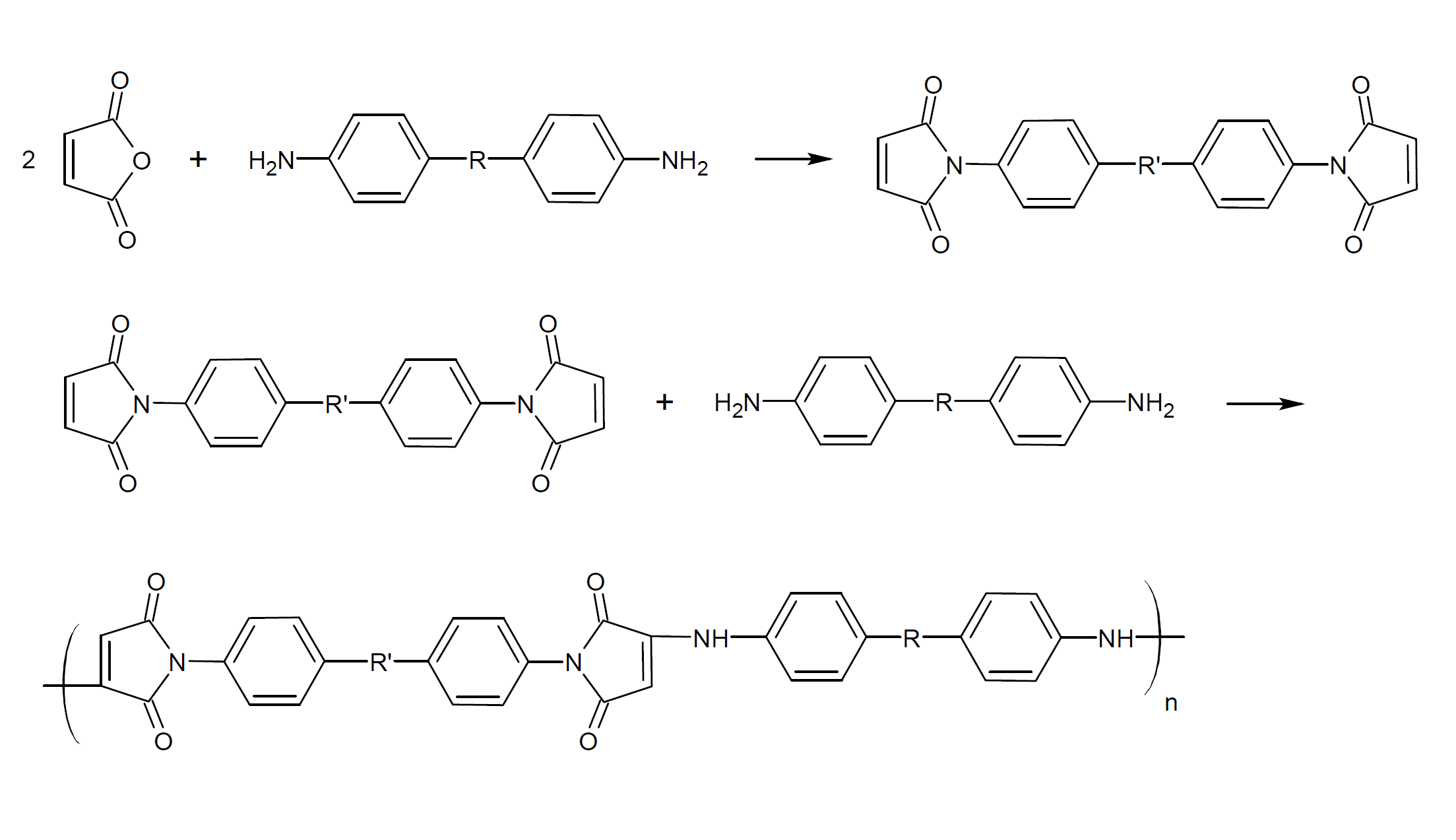Polybismaleimides (BMI)
Properties
Polybismaleimides (BMI) are high performance thermosetting addition-type polyimides. Their characteristics are similar to those of polyimides, which include high strength and rigidity at elevated temperatures, long-term heat and oxidative stability, excellent electrical properties and relatively low propensity for moisture absorption. Like polyamides, they have outstanding dimensional stability and provide one of the best high temperature performance. They also have excellent chemical resistance including hydrocarbons, alcohols and halogenated solvents. Due to their high strength and excellent long-term creep resistance, they can replace metal and other materials in many structural applications.
Bismaleimides are usually not used in their pure solid form, that is, they are often blended with reactive co-monomers such as vinyl and allyl compounds, allyl phenols, isocyanates, and aromatic amines. These blends are usually easier to process and have improved toughness and flexibility. They often have a paste-like consistency and can be molded to the desired shape. However, the viscosity of these blends is often very high so that sometimes diluents are added to improve their processability.
Polybismaleimides can be synthesized by condensation of phthalic anhydride with an aromatic diamine at molar ratio 2:1, which yields bismaleimide, followed by subsequent Michael addition of more diamine to the double bond at the ends of the bismaleimide. The addition polymerization is typically carried out with an excess of bismaleimide to produce maleimide end-capped resins.

The most important bismaleimide monomer is 4,4'-bis(maleimido)diphenylmethane (BMI). It has a melting temperature of about 155°C and polymerizes readily above its melting point. BMI is often copolymerized with 2,2'-diallyl bisphenol A (DBA). These resins are usually insoluble in ordinary organic solvents and are soluble only in high boiling aprotic polar solvents, such as dimethyl sulfoxide (DMSO), N-methyl-2-pyrrolidone (NMP) or N,N-dimethylacetamide (DMAc). The most common curatives are aromatic diamines.
Bismaleimide are often sold as low molecular weight dry powder resins containing imide structures already in the monomer form. These resins can be polymerized by various polyaddition reactions with themselves as well as with other co-monomers. In contrast to polyimides, the polyaddition of bismaleimides does not result in linear polymers but three-dimensionally crosslinked thermoset structures that exhibit high temperature resistance. Unlike imides, the polyaddition reaction does not produce any volatile side products. Thus, bismaleimides can be cured without the release of volatile byproducts which would cause voids in the crosslinked polymer matrix. For this reason, they are well suited as reactive adhesives and prepregs that do not need a post-processing step to achieve high performance properties.
COMMERCIAL Polybismaleimides
Polybismaleimides products (BMIs) are manufactured by Huntsman under the trade names KERIMID and MATRIMID. They are often sold as low molecular weight dry powder resins or as liquid pastes containing imide structures already in the monomer or oligomer form.
Applications
Bismaleimide resins are known for their high-strength and high-temperature performance. Their performance lies between lower temperature resistant epoxy systems and very high temperature-resistant polyimides. They are widely used as matrix resins for high-performance (fiber-reinforced) composites in electronic and aerospace industries. They also find applications as high performance adhesives. Very often these reactive polymers require high curing temperatures of more than 150 °C and long curing times.